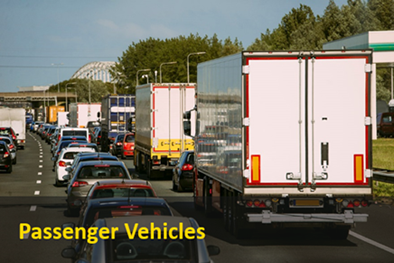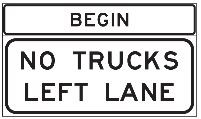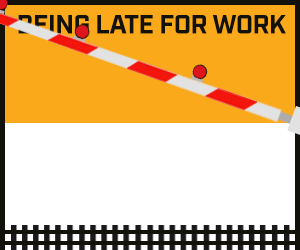The U.S. Department of Transportation’s Federal Railroad Administration (FRA) and National Highway Traffic Safety Administration (NHTSA) have launched a national railroad crossing safety ad campaign to increase public awareness around railroad tracks and reduce crossing deaths and injuries.
Freight Safety
Regional transportation safety initiatives are developed to create a safer environment for bicyclists and pedestrians, commuters, first responders, commercial motor vehicle operators and anyone else traveling from one place to another on our roadways. North Central Texas has an enormous volume of freight being transported every day, by semi- trucks and other Commercial Motor Vehicles. If you own it, a truck probably brought it.
As the population grows and freight traffic increases to supply the growing demand of consumer product deliveries, the potential for roadway incidents between automobiles and Commercial Motor Vehicles escalates. Many drivers do not realize that these vehicles have "blind spots" where the driver has no view of passing vehicles. They are difficult to maneuver and the length of time needed to stop is about 40% greater than cars. Source : Federal Motor Carrier Safety Administration
 |
|
Freight Safety Initiatives
Goal
To create a safer environment for freight and passenger movements through physical improvements and safety awareness initiatives
Truck Safety
Reduce freight-related crashes by 10 percent over the next 2 years by informing the public about driving conditions and safe driving practices around heavy-duty freight vehicles
Rail Safety
Reduce rail crossing and trespassing incidents by 10 percent over the next 2 years by informing the public about safe rail crossing habits and practices
Graphics: Federal Motor Carrier Safety Administration
Truck Lane Restrictions
Truck drivers can also help make the roads safer for everyone by following the truck lane restrictions. Truck lane restrictions limit the lanes used by trucks on certain freeway corridors throughout the region. In these corridor sections, trucks with three or more axles are prohibited from using the inside left lane, except when passing traffic. This eases congestion and reduces the number of truck-related crashes on the freeways.
-
The Dallas-Fort Worth region has over 500 miles of truck lane restrictions

that improve the safe and efficient movement of freight. -
Thirty-four municipalities in the DFW area have truck lane restrictions. Visit our web page to find out more.
In the past 5 years, on average, there have been 267 truck-involved crashes per month in North Texas. The number of crashes has increased each of those years. By understanding the importance of proper driving near and around trucks, navigating traffic will be safer, faster, and more efficient.
.jpg?width=500&height=215)
Since 2000, when there were 67 incidents in North Texas, the number of incidents has been trending downward. In 2019, there were only 39 incidents recorded. To continue this important safety trend, drivers and pedestrians should heed safety signals and warnings.
.jpg?width=500&height=297)
To learn more about other regional safety initiatives, please visit our Safety web page.
Staff Contacts: Jeff Hathcock, Mike Johnson, Dan Lamers

